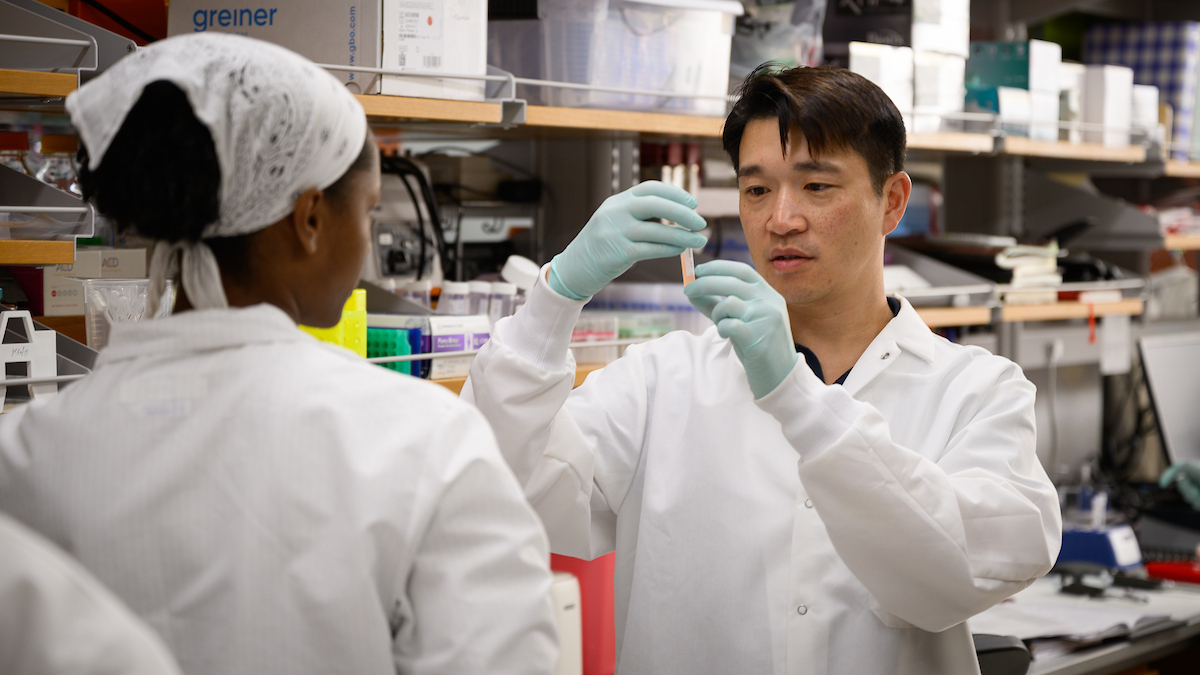What’s Anatomy Got to Do with It?
Anatomy is the study of the body and its parts. In the first semester of veterinary school we study dog and cat anatomy. I knew it would be intense, but as a pre-vet I did not fully understand the workload involved in learning anatomy nor did I appreciate the importance of gaining that knowledge.
The first day of anatomy lab is like being dropped off in the middle of the Atlantic and told to swim to shore. The task is immediately daunting, and you find it a bit hard to breath. The list of terms you must learn and identify is overwhelming. The new words sound like another language (in fact, most are Latin), and you are not sure how you could possibly learn them all.
So, how do you swim across the ocean? It can only be done one stroke at a time. We start with the bones and all their nooks and crannies. Next come the muscles that attach to the bones and move the body. Arteries supply the nutrients and veins remove the waste, while nerves wander around giving all the pieces of the body directions for how to act. Bones, muscles, arteries, veins, and nerves—each one learned is another stroke toward our goal. By the end of the first week, we are miraculously gliding forward, and learning more than we ever thought possible.
At first I did not know why we put so much effort into learning all these anatomical bits and pieces. As it turns out however, anatomy is really the foundation for ALL our other classes. We cannot understand the processes of the living body (physiology) without knowing the underlying anatomy. We cannot appreciate microscopic cells and body tissues (cytology and histology) without recognizing where they came from. And without an anatomic backdrop to aid our discussion of infectious processes (infection and immunity), the concepts make little sense.
Still, anatomy was just another subject to me, just more information to be learned, until recently. I was reading the novel Cutting for Stone, and I came to a portion of the story where the author describes a liver transplant procedure. The portrayal of the surgery was surprisingly detailed, and I was hooked! I could picture in brilliant detail every organ and vessel mentioned. I could imagine Dr. Stone using microsutures to connect the arteries and veins running to and from the liver. I remember thinking to myself, “be careful of the portal vein, that it doesn’t leak unfiltered intestinal debris into the abdominal cavity!”
I realized then that this is exactly the reason we learn anatomy. When a client tells us about a problem with their animal, we will be able to visualize where the problem may be and what anatomic structures may be affected, just as I could visualize the liver and portal vein while reading my book. A solid understanding of anatomy is the starting point for making a diagnosis. Anatomical knowledge also helps us recognize abnormalities in an animal. Either by looking at radiographs (x-rays) or by palpating (physically examining) the animal, we will be able to identify when some anatomical feature is not how it should be. This can not only help lead us to the problem, but also, toward a solution.
So, in addition to rapidly expanding my medical vocabulary, the last few weeks have taught me that anatomy represents the core of veterinary medicine. It is prevalent in everything we learn as veterinary students. It is the foundation knowledge for us to build all the rest of our expertise upon. Once we have toned up our muscles treading all this water, we’ll be in fit shape to take on the next challenge.
*For the curious: sustentaculum tali is a knobby part of one of the tarsal (ankle) bones and provides a place of attachment for important ligaments and tendons; tapetum lucidum is a layer of reflective material in the eye of many animals that aids their night vision—this is the green or yellow glow we see in the eyes of animals in a flashlight beam at night.
Sarah Blau, a member of the Class of 2017 at NC State University’s College of Veterinary Medicine, is sharing some of what she learns and experiences as a first-year veterinary student with readers of the CVM News Central Blog. Watch for these postings on a monthly basis.


